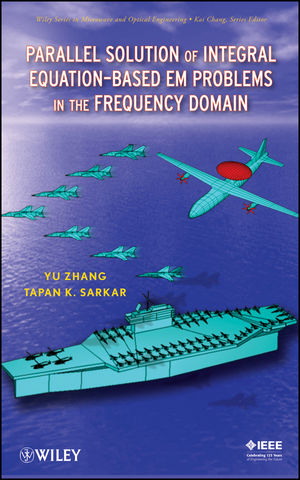Parallel Solution of Integral Equation-Based EM Problems in the Frequency DomainISBN: 978-0-470-40545-1
Hardcover
364 pages
June 2009, Wiley-IEEE Press
 |
||||||
The future of computational electromagnetics is changing drastically as the new generation of computer chips evolves from single-core to multi-core. The burden now falls on software programmers to revamp existing codes and add new functionality to enable computational codes to run efficiently on this new generation of multi-core CPUs. In this book, you'll learn everything you need to know to deal with multi-core advances in chip design by employing highly efficient parallel electromagnetic code. Focusing only on the Method of Moments (MoM), the book covers:
-
In-Core and Out-of-Core LU Factorization for Solving a Matrix Equation
- A Parallel MoM Code Using RWG Basis Functions and ScaLAPACK-Based In-Core and Out-of-Core Solvers
- A Parallel MoM Code Using Higher-Order Basis Functions and ScaLAPACK-Based In-Core and Out-of-Core Solvers
- Turning the Performance of a Parallel Integral Equation Solver
- Refinement of the Solution Using the Conjugate Gradient Method
- A Parallel MoM Code Using Higher-Order Basis Functions and Plapack-Based In-Core and Out-of-Core Solvers
- Applications of the Parallel Frequency Domain Integral Equation Solver
Appendices are provided with detailed information on the various computer platforms used for computation; a demo shows you how to compile ScaLAPACK and PLAPACK on the Windows® operating system; and a demo parallel source code is available to solve the 2D electromagnetic scattering problems.
Parallel Solution of Integral Equation-Based EM Problems in the Frequency Domain is indispensable reading for computational code designers, computational electromagnetics researchers, graduate students, and anyone working with CEM software.



